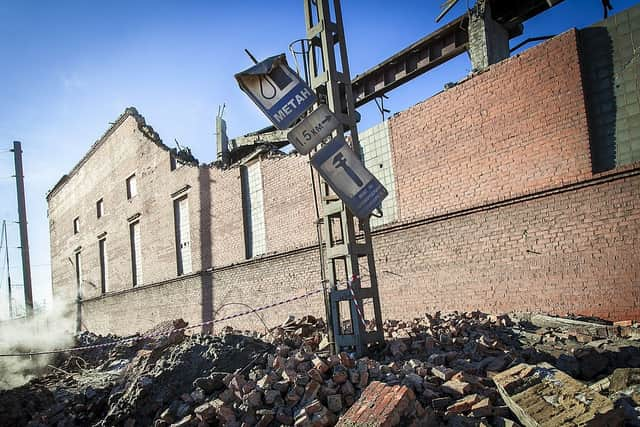An asteroid with 'earth destroying capabilities' is on its way towards earth - but should you be worried?


NASA has confirmed that an asteroid with devastating capabilities is hurtling towards our planet at an incredible speed. But should we be alarmed?
The rock, called 2020 CH, measures between 22 to 55 metres in diameter, making it a relativity small asteroid. But it is heading towards us at 21,100 miles an hour - and it's due to be seen tonight.
Advertisement
Hide AdAdvertisement
Hide AdThough it may sound unsettling, the reality of this space phenomenon is more interesting than it is frightening.


Is an asteroid going to hit earth this week?
NASA has reportedly said that there is a 0.1 per cent chance of earth being struck by a large asteroid in any year. There is also a 20 per cent chance the asteroid will hit an unpopulated area of the planet.
The space agency stated, “If a rocky meteoroid larger than 25m but smaller than one kilometre were to hit earth, it would likely cause local damage to the impact area".
It looks like our approaching friend is roughly the right size for a catastrophic collision. But, the asteroid is not expected to collide with earth once it makes its approach. In fact, the closest this galactic traveller will get to earth is 0.029 astronomical units away - that's 4.5 million kilometres from earth.
Damage caused by shock wave from meteor in Chelyabinsk, Russia, in 2013. Hundreds of people were injured making it the biggest known human toll from a space rock (Photo: Getty Images)
Why all the worry?
There was already another asteroid en route towards earth earlier in the week, and The Metro reported that eight have been detected over the last few weeks.These are all large enough and will get close enough to be considered "near-earth objects".
A 77 asteroid called 2020 BQ11 flew past us on 8 February, almost three million miles away.
NASA considers an asteroid potentially hazardous if it passes within 4.5 million miles of earth. BQ11 was within that range, so NASA labelled it as such. But this is mainly for observation, and the chances of it striking earth were extremely low.
Advertisement
Hide AdAdvertisement
Hide AdShould I be concerned?
That being said, the likelihood of a collision with earth isn't impossible. NASA has said that an asteroid the size of a football pitch is due roughly every 2,000 years. The last time earth was struck by an asteroid of such catastrophic magnitude was 66 million years ago.
In 2013, a meteor exploded over Chelyabinsk in Russia, with the force of 22 kilotons of TNT. Considering the powerful explosion, the Chelyabinsk meteor was only 20 metres in size.
Asteroid collisions are a genuine and real risk, and NASA is just doing its job by monitoring and alerting us about those celestial rocks that approach us, mainly for the benefit of scientists.
The latest visitor, 2020 CH, is expected to happen around 1am tonight.